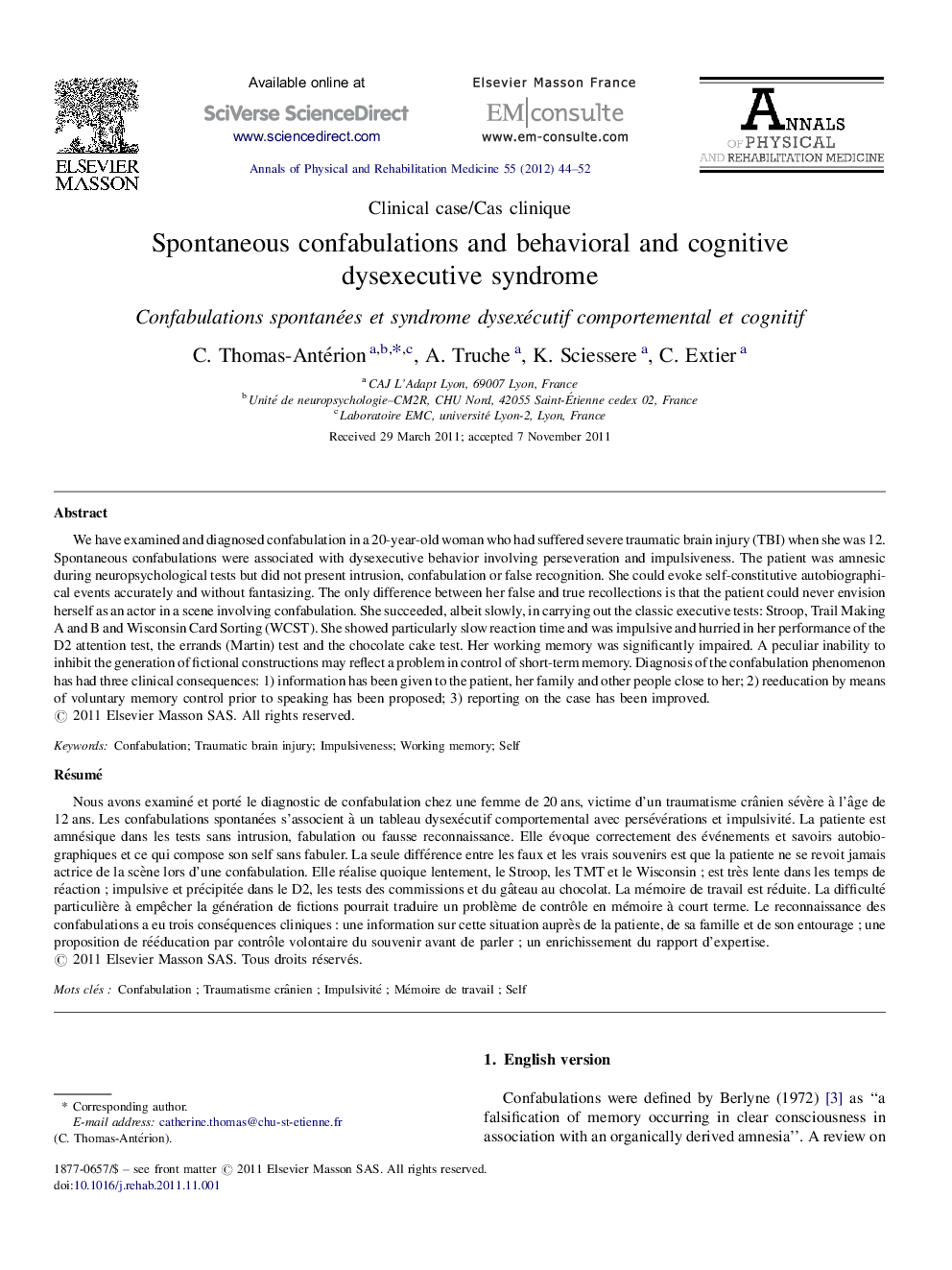| کد مقاله | کد نشریه | سال انتشار | مقاله انگلیسی | نسخه تمام متن |
|---|---|---|---|---|
| 4041224 | 1603330 | 2012 | 9 صفحه PDF | دانلود رایگان |

We have examined and diagnosed confabulation in a 20-year-old woman who had suffered severe traumatic brain injury (TBI) when she was 12. Spontaneous confabulations were associated with dysexecutive behavior involving perseveration and impulsiveness. The patient was amnesic during neuropsychological tests but did not present intrusion, confabulation or false recognition. She could evoke self-constitutive autobiographical events accurately and without fantasizing. The only difference between her false and true recollections is that the patient could never envision herself as an actor in a scene involving confabulation. She succeeded, albeit slowly, in carrying out the classic executive tests: Stroop, Trail Making A and B and Wisconsin Card Sorting (WCST). She showed particularly slow reaction time and was impulsive and hurried in her performance of the D2 attention test, the errands (Martin) test and the chocolate cake test. Her working memory was significantly impaired. A peculiar inability to inhibit the generation of fictional constructions may reflect a problem in control of short-term memory. Diagnosis of the confabulation phenomenon has had three clinical consequences: 1) information has been given to the patient, her family and other people close to her; 2) reeducation by means of voluntary memory control prior to speaking has been proposed; 3) reporting on the case has been improved.
RésuméNous avons examiné et porté le diagnostic de confabulation chez une femme de 20 ans, victime d’un traumatisme crânien sévère à l’âge de 12 ans. Les confabulations spontanées s’associent à un tableau dysexécutif comportemental avec persévérations et impulsivité. La patiente est amnésique dans les tests sans intrusion, fabulation ou fausse reconnaissance. Elle évoque correctement des événements et savoirs autobiographiques et ce qui compose son self sans fabuler. La seule différence entre les faux et les vrais souvenirs est que la patiente ne se revoit jamais actrice de la scène lors d’une confabulation. Elle réalise quoique lentement, le Stroop, les TMT et le Wisconsin ; est très lente dans les temps de réaction ; impulsive et précipitée dans le D2, les tests des commissions et du gâteau au chocolat. La mémoire de travail est réduite. La difficulté particulière à empêcher la génération de fictions pourrait traduire un problème de contrôle en mémoire à court terme. Le reconnaissance des confabulations a eu trois conséquences cliniques : une information sur cette situation auprès de la patiente, de sa famille et de son entourage ; une proposition de rééducation par contrôle volontaire du souvenir avant de parler ; un enrichissement du rapport d’expertise.
Journal: Annals of Physical and Rehabilitation Medicine - Volume 55, Issue 1, February 2012, Pages 44–52